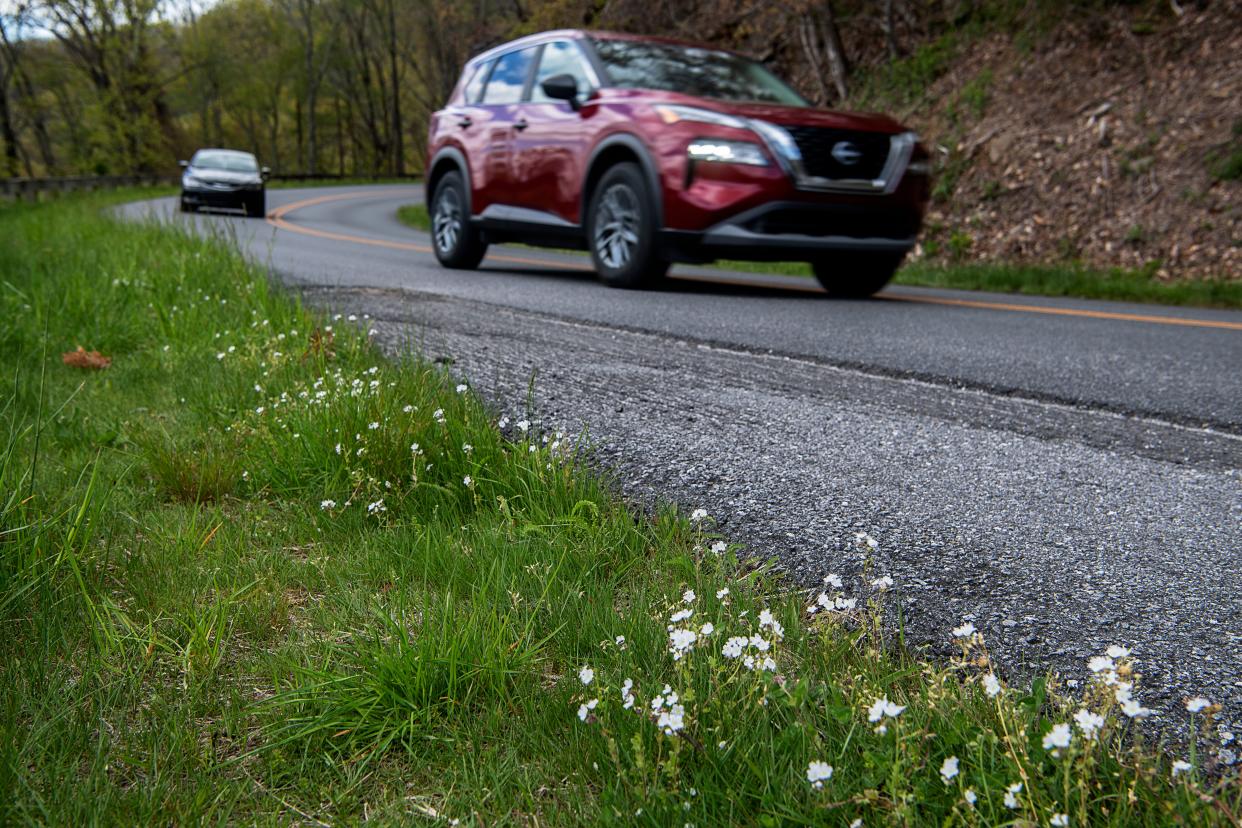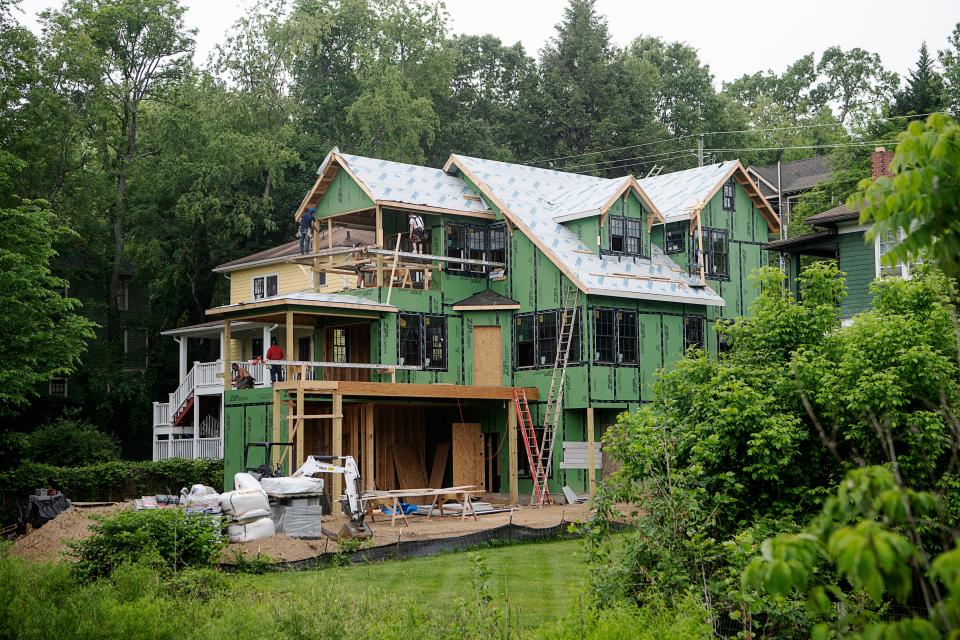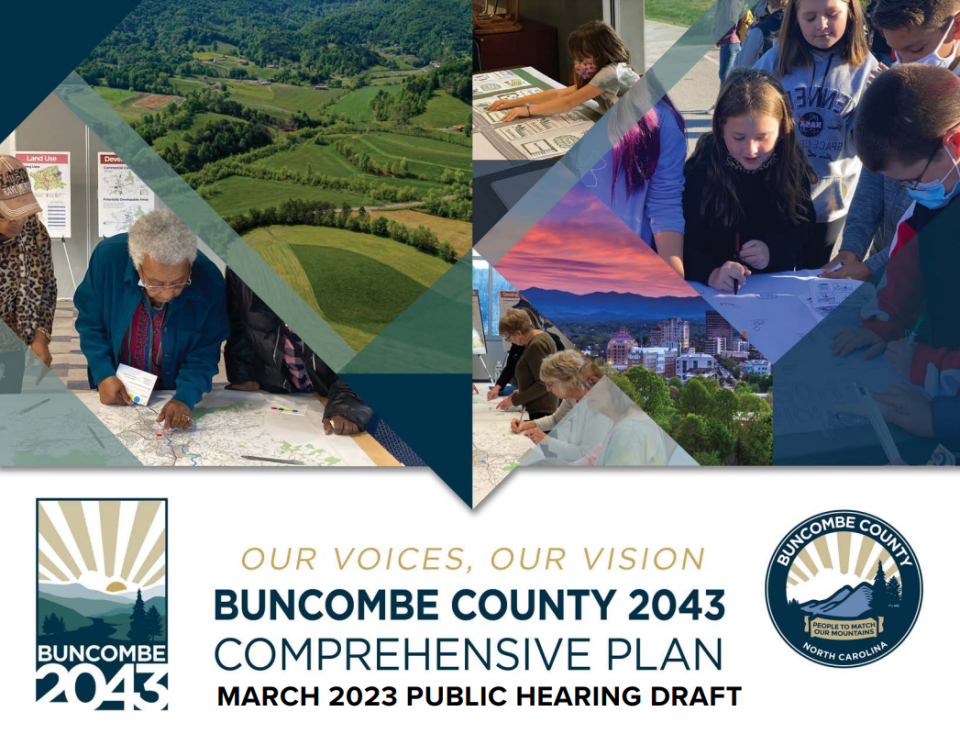Asheville ranks on list of cities most likely to see impact of 'climate migration'

If elbow room seems to be in short supply on Asheville's streets and hiking trails, just wait for the expected climate migration.
Asheville was recently named third on a list of the top 12 U.S. cities most likely to receive an influx of residents due to climate migration by an expert in sustainable real estate in conversation with USA TODAY.
The ever-growing impacts from climate change, including warmer temperatures, rising sea levels rise, more powerful and destructive storms will have more people fleeing coastal areas for places more able with withstand climate change, such as Western North Carolina.
Willingness to sign a 30-year mortgage can often hinge on how well the property can be expected to withstand the test of time — a test that has become more and more difficult to pass due to the effects of climate change, according to USA TODAY.
The newspaper, which is owned by Citizen Times' parent company Gannett, spoke with Jesse Keenan, economist and associate professor of sustainable real estate at Tulane University, who explored a number of factors with a team of researchers to formulate the list of 12 cities.
More: Asheville GreenWorks announces executive director's departure; new mission and direction
More: Asheville 1 of 18 cities in heat-mapping campaign; GreenWorks to lead study

Communities on Keenan’s list were chosen for a combination of their geographies, economies and level of preparation they have already undergone to ready for continued climate challenges. Keenan spoke to the Citizen Times about a specific lens they used — the concept of push factors and pull factors.
Keenan said significantly more work has been done on push factors — those that cause residents to leave a city in search of something more optimal — even though the sets of factors go very much hand in hand.
Some pull factors, Keenan said, were not necessarily thought of as directly related to climate change, though the ultimate results of moves were the same.
“What did these various regions have, in comparative terms relative to climate, housing, affordability, economic development, school system, hospital health care, access — you know, all the things that actually play into regular decision making within the context of just domestic migration period and non-climactic terms.”
On the reverse, Keenan said that the N.C. coast is guilty of many push factors. He said Asheville originally fell on his team’s radar as a destination for climate migrators as they tracked the paths of people moving away from the North Carolina coast following major damages from the 2017 hurricane season.
“Some of that coastal movement has been originated because of the high cost of living on the coasts, and some constraints on new construction, and things that were not necessarily environmentally or climactically ordered,” Keenan said. “
But that movement has picked up, and it has picked up in large part after the 2017 hurricane season. And interviews have suggested that there has been certainly relocations because of the cost of insurance, and the cost of housing and other things that are incidental to what we believe would be climatically oriented phenomenon.”
More: Opinion: Let's talk about it: The power of Asheville, WNC stories in a climate crisis
More: Asheville area Earth Day roundup: Cleanups, 5Ks, pollinator events celebrate environment
Keenan said he had observed benefits in local economies due to some of this migration. However, he also saw what he referred to as “climate gentrification.”
“In theory, Asheville could start feeling crowded much sooner than later,” Keenan said.
Asheville ranked No. 3 on the list, behind No. 1 Duluth, Minnesota, and No. 2 Orlando, Florida.
'Blessing and a curse'
Asheville has already been growing rapidly. There was about a 13% increase in population between 2010 and 2020, from 83,000 people to about 94,000, according to the U.S. Census.
The predicted influx of climate-related moves to the area certainly does have those economic benefits. Keenan said that Asheville’s welcoming community and vibrant culture draws movers who often help add to this. However, he said that the already crowded city needs to invest in careful, climate-friendly urban planning to keep this spirit intact.

More: Rent control coming to Asheville? Who proposed law could help and why it faces challenges
More: New restaurants that opened in Asheville area from January to April 2023
“I think that that cultural capacity of Asheville to have an open door is both a blessing and a curse,” Keenan said. “I think it's a blessing in the sense that as people move in, it builds social capital, it builds community connections, and it builds a stronger community. I think it's also a bit of a curse to the extent that it makes it a very attractive place. Culture does add a lot of value and economic value to the housing market. Asheville has been under a lot of economic strain, and significant housing costs, and land constrained land development.”
Keenan said keeping the city walkable was a huge piece of the puzzle, and one that many other cities have struggled with.
“Historically, Asheville was a pretty compact place that was pretty walkable in most neighborhoods. So, I think that it's a real challenge for the urban planners, and really the community to decide for themselves how they want to grow.”

More: Pisgah, Nantahala forest plan drew a lot of objections. What did they help change?
More: Buncombe Comprehensive Plan OK'd despite some protests over potential development growth
Anyone who has dealt with standstill traffic, noisy construction or packed sidewalks might have some idea of Asheville’s rate of growth. Residents have widely varied feelings about this growth, and the city government and partnered organizations have attempted to address subjects of concern accordingly.
In 2018, the City of Asheville’s Planning and Urban Design department released a Comprehensive Plan which they described as “a tool used to establish a high-level vision to guide citywide policy decisions over several years.” The plan contains a 128-page section titled Planning for Climate Resilience that takes an in depth look at what the city hopes to accomplish in order to create a sustainable future.
The document explores what Asheville is doing right, any hazards or problem areas, and most importantly, looks forward to discuss what the next steps in the city’s journey to sustainability will be.
Some key points of the extensive document are summarized below courtesy of Adaptation Clearinghouse.
Strengthening urban transit corridors using smart growth principles
Creating a green infrastructure network around transportation corridors to address urban heat islands
Protecting sensitive lands and promoting edible and native landscapes that improve water quality and reduce waste and energy use
Fostering resilient neighborhoods through place-making and enhanced community engagement particularly with minority communities
Using nature to enhance open space and stormwater management
Enhancing equitable, upward mobility by addressing housing affordability and workforce development
Iris Seaton is the Citizen Times News Reporting Intern. Email her at iseaton@citizentimes.com.
This article originally appeared on Asheville Citizen Times: Will climate change migration overpopulate Asheville?
